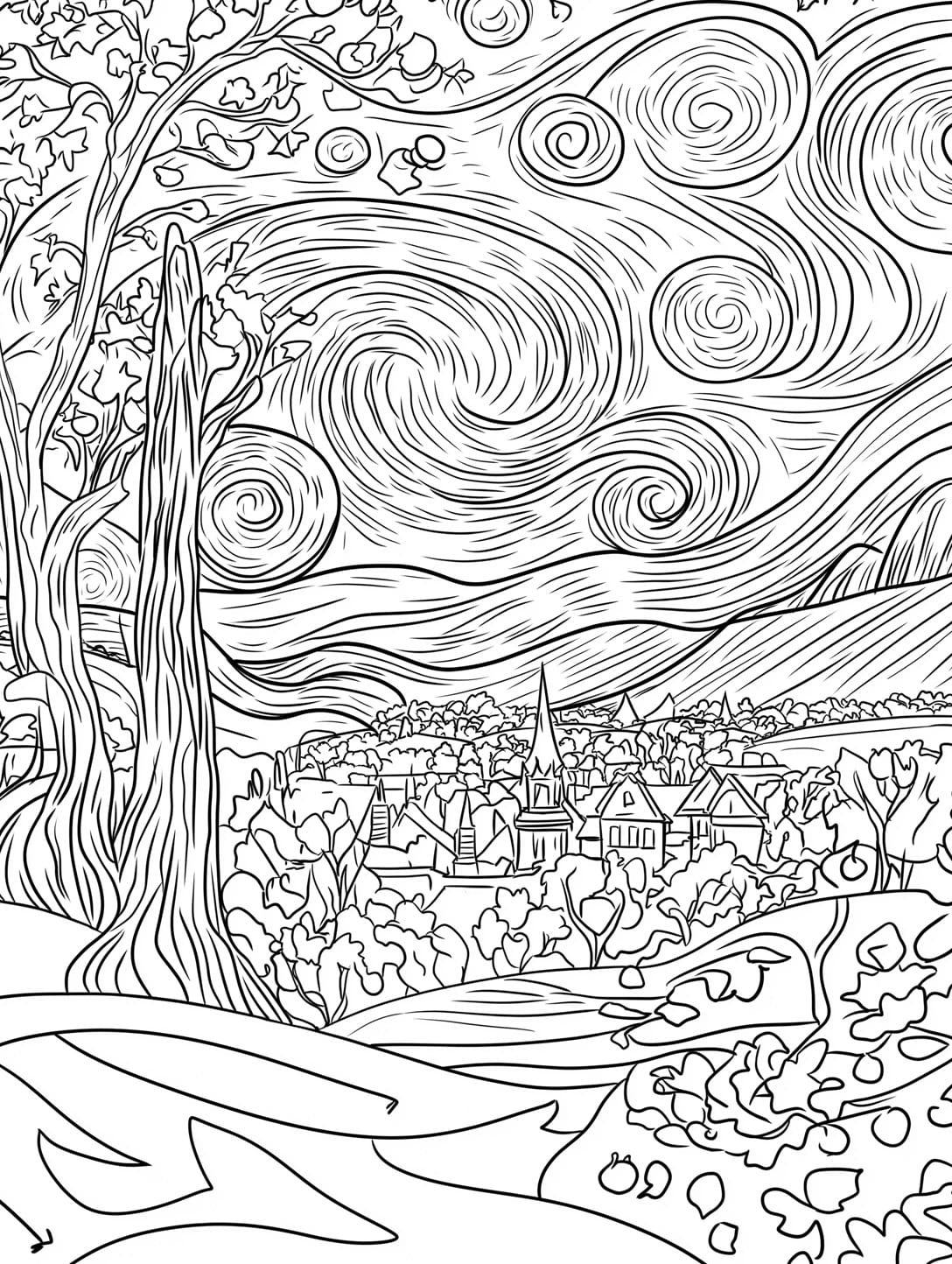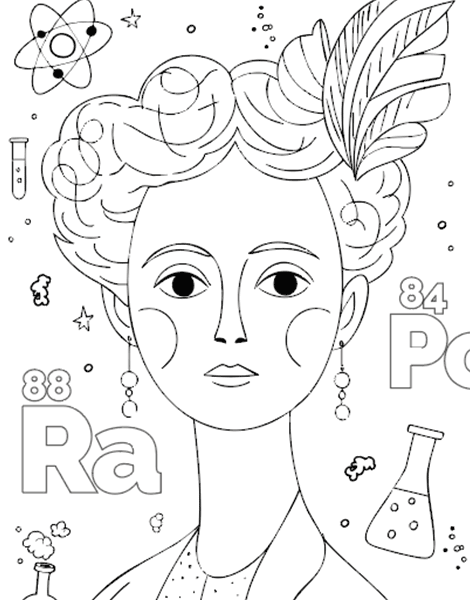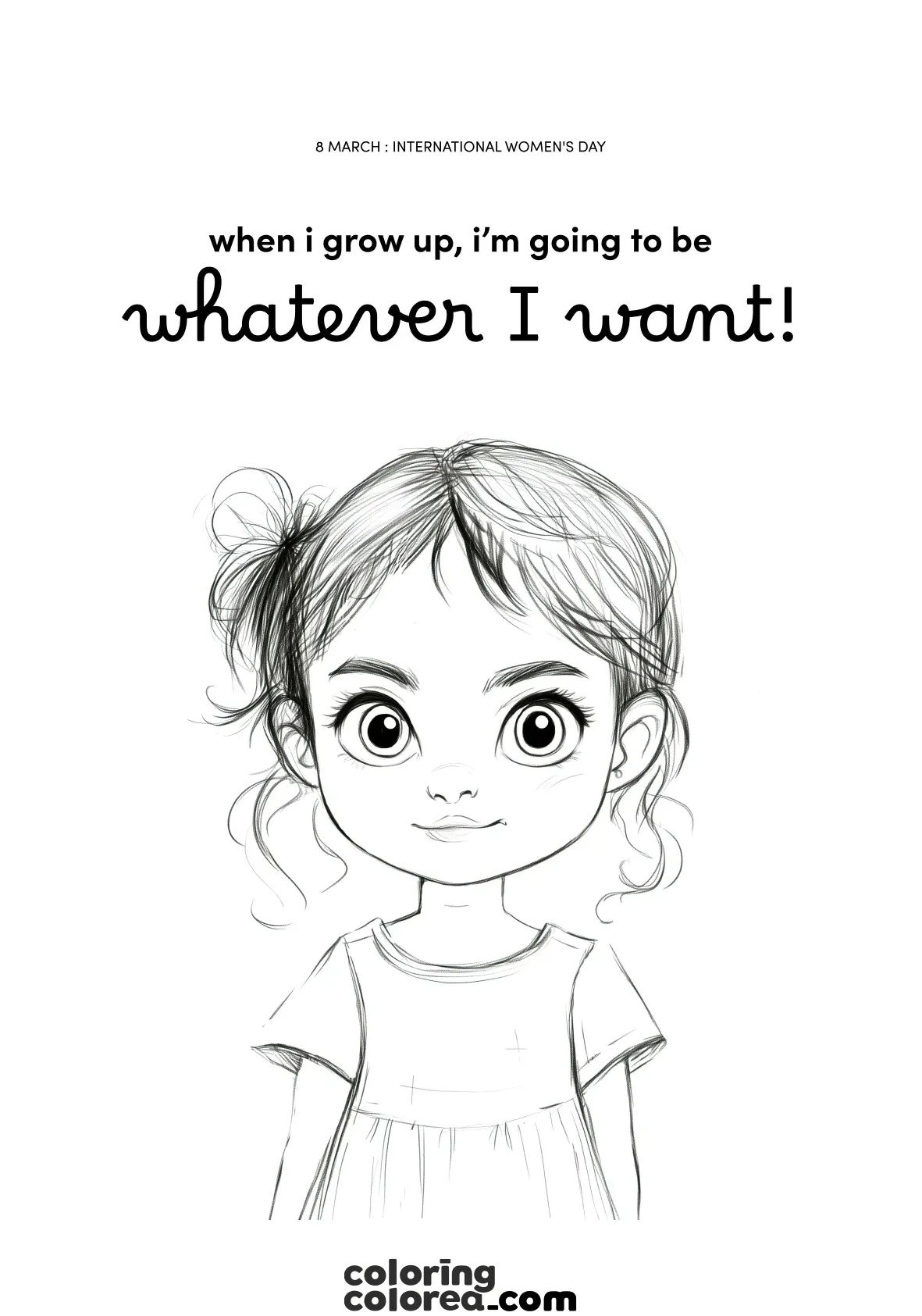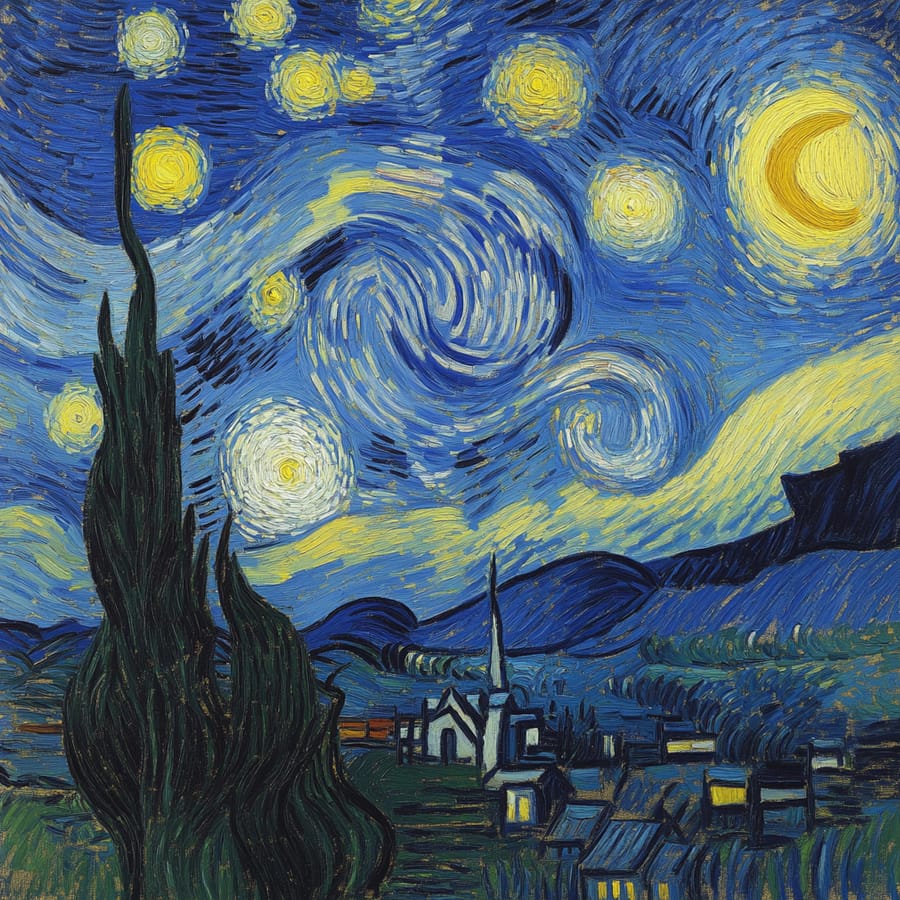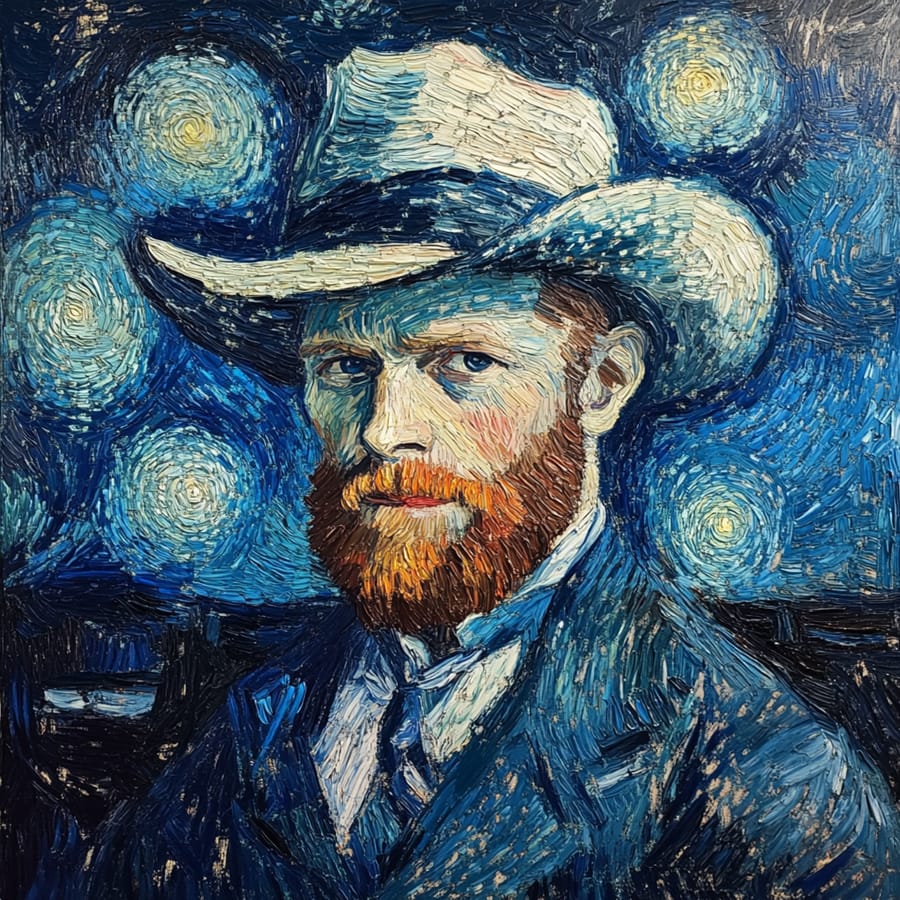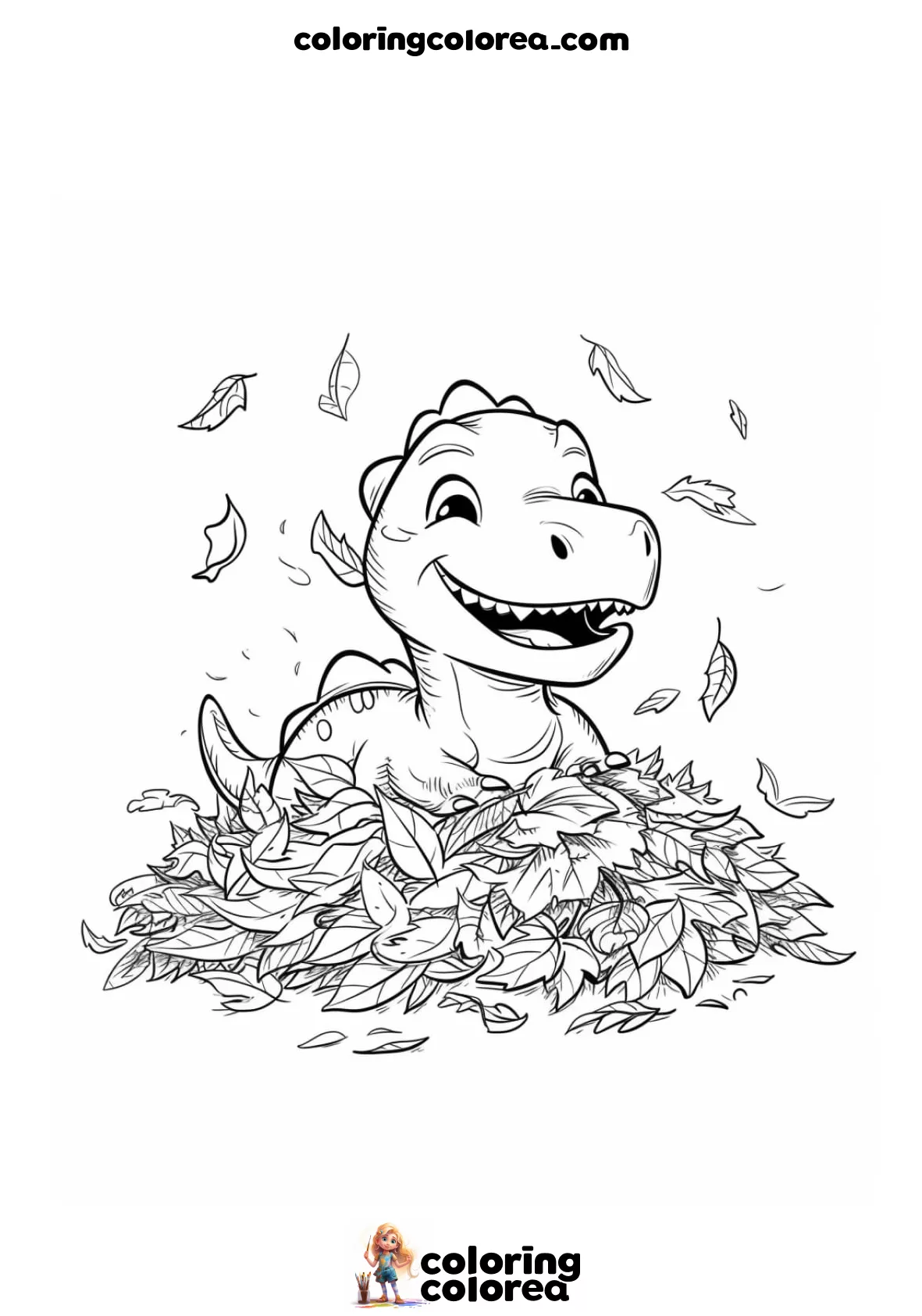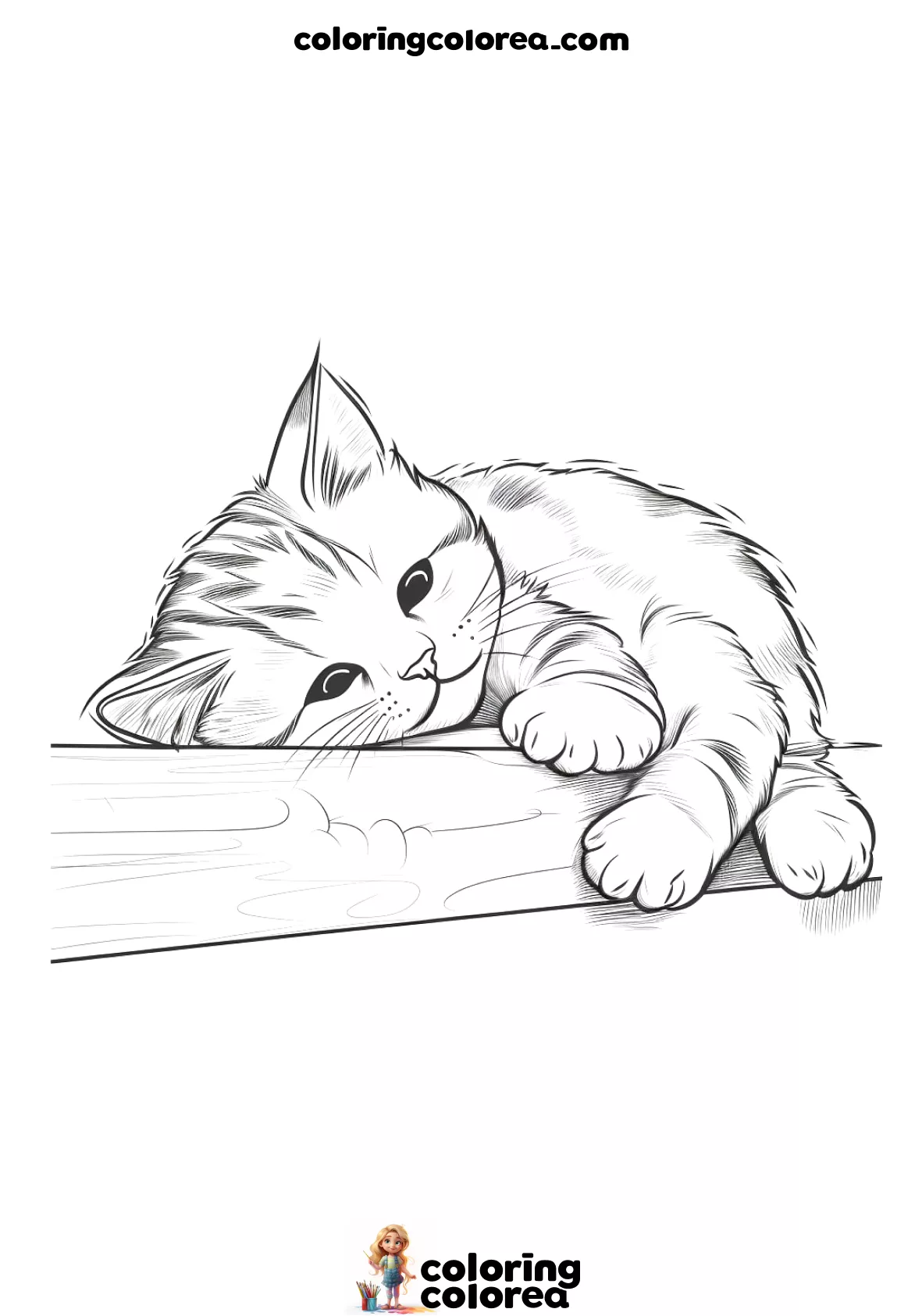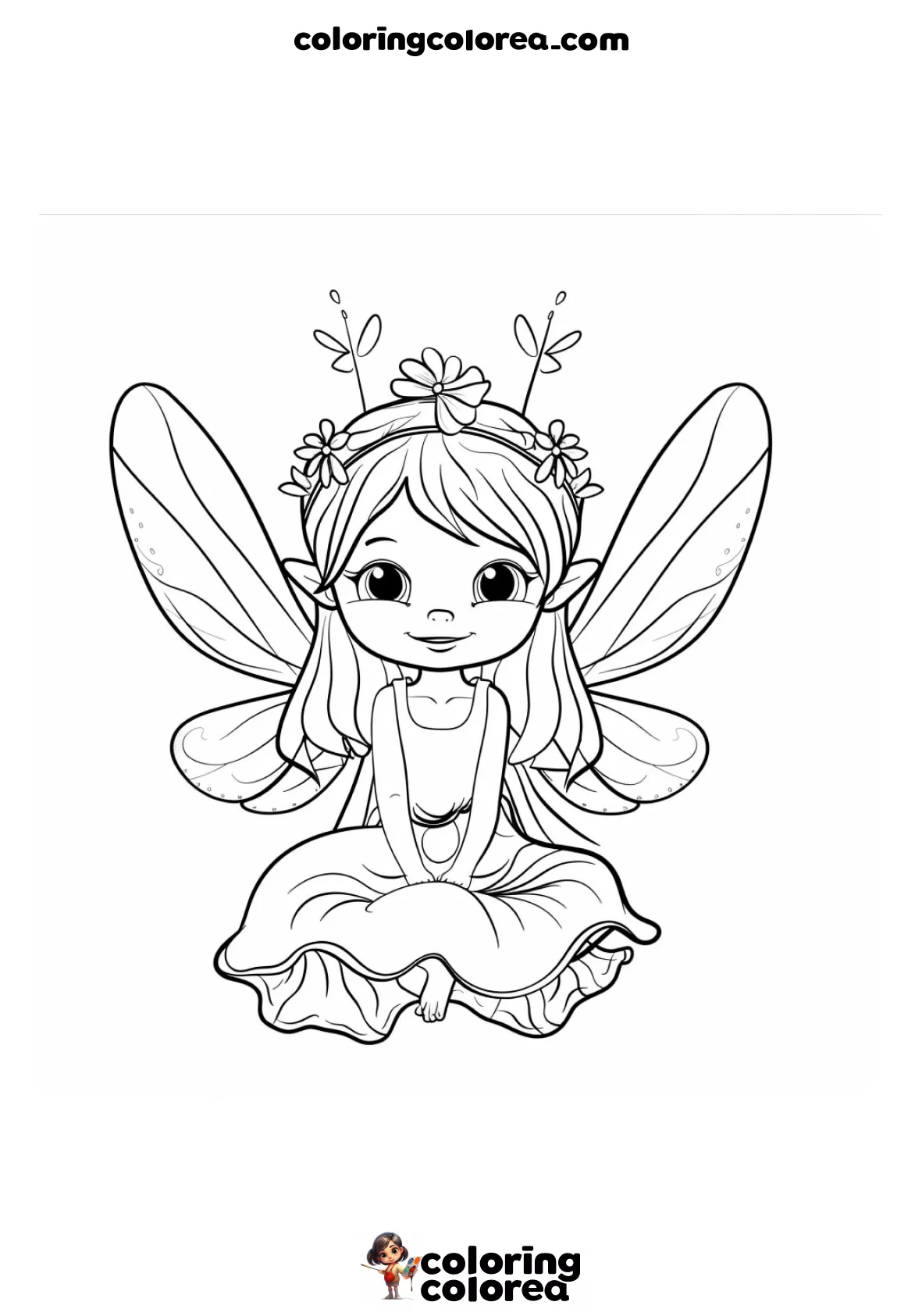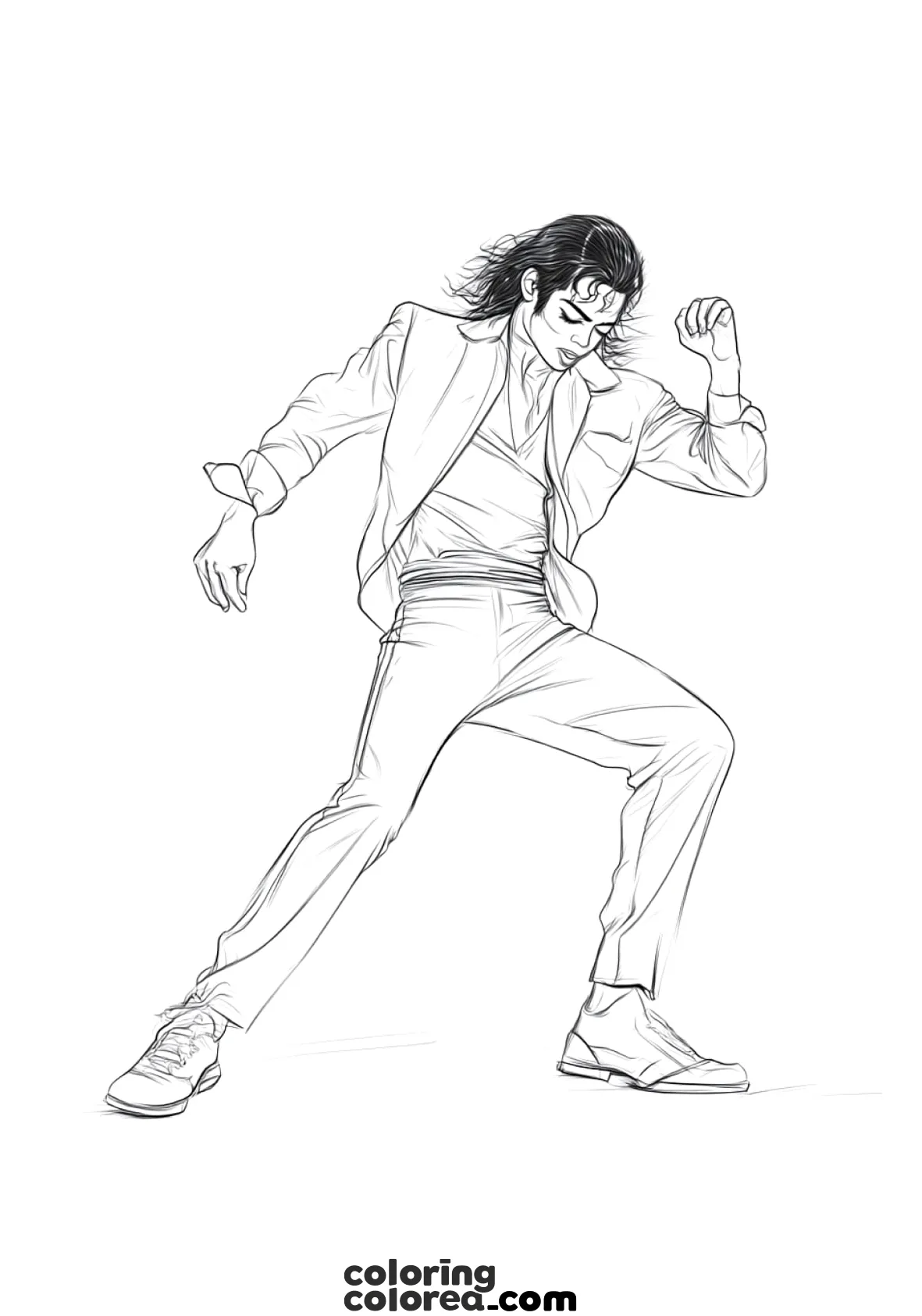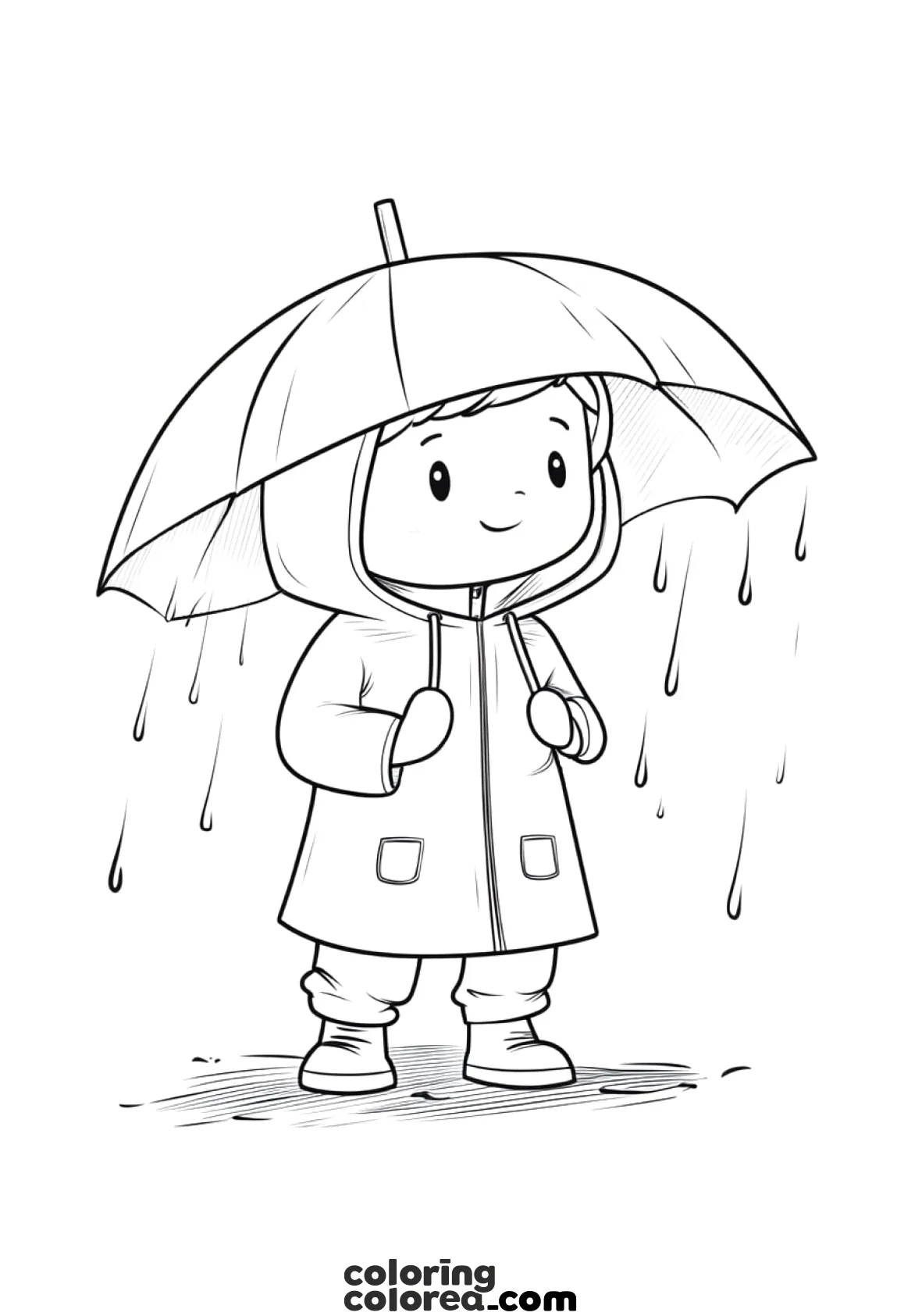The main difficulty in this coloring page lies in capturing the essence of the emotions Van Gogh originally portrayed. Although this drawing has no colors yet, its swirling lines, curves, and shapes already communicate strong energy and movement. The challenge is to select colors that amplify and clarify this emotional power.
Start with the sky—it’s the most dynamic part of the picture. Van Gogh painted it filled with swirling shapes to represent wind, energy, and the passage of time. These curved lines seem easy at first, but coloring them requires patience and careful thought. You must decide how to give each swirl a sense of life and rhythm. One helpful method is to use colors that communicate emotions. Deep blues, purples, and dark violets can express feelings of mystery, dreaminess, or even wonder. Feel free to experiment beyond realistic colors, as your emotions can guide you toward shades that best reflect your feelings. Each swirl and curve can become an emotional expression, full of vibrancy and energy.
The stars represent another artistic challenge. In the original painting, Van Gogh painted them large, bright, and surrounded by glowing halos to express hope, vitality, and a sense of wonder. To achieve this effect, you might use shades of yellows, whites, or golds. Begin at the center of each star with a lighter color, progressively darkening your tones as you move outward in circles. This technique creates the impression of brightness, making the stars shine vividly. Pay attention to how the stars relate to the sky and village, forming connections between these different parts of the drawing.
At the bottom of the drawing lies the village, presenting its own unique difficulty. Unlike the vibrant and swirling sky, the village is calm and peaceful. Here, your challenge is to portray this stillness effectively. Choose softer, gentler colors, such as pale browns, pastels, or even subtle grays. The contrast between the lively sky and the peaceful village is crucial to the drawing’s message. By carefully selecting quiet and steady colors, you can communicate serenity, comfort, and security. Try using subtle shading to create depth and dimension, highlighting certain areas with slightly different tones to suggest light and shadow.
In the foreground, tall trees stretch upward, presenting yet another artistic challenge. These trees have intricate lines, curves, and shapes. To bring depth and life to these trees, use different shades of the same color, like various greens or browns mixed with black, to add texture and realism. Pay special attention to the tall, wavy tree in the foreground. It’s significant because it visually connects the energetic sky to the quiet earth below. When coloring this tree, think about how it connects to the rest of the scene—not merely as a tree, but as a symbolic bridge between the earth and the heavens, reality and imagination.
